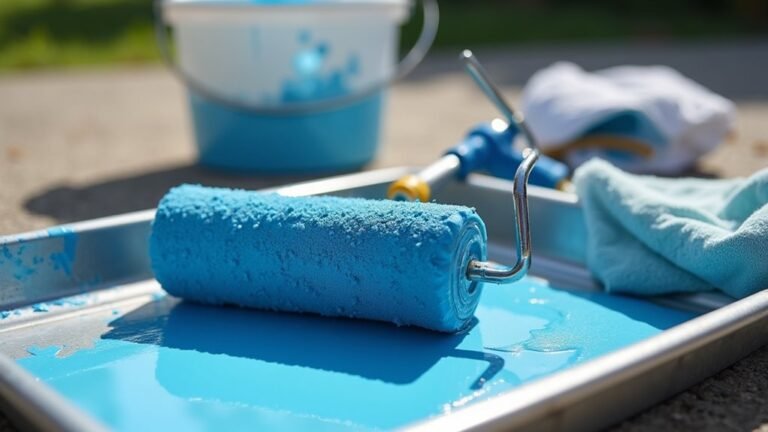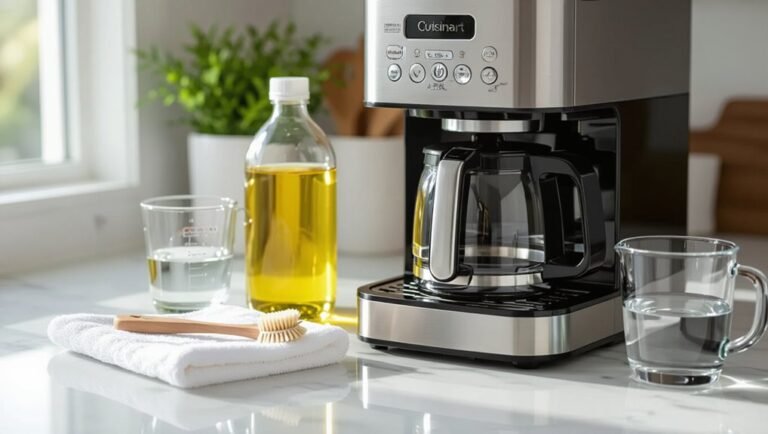Finding rust on your flat top grill can be frustrating. That reddish-brown stuff isn’t just ugly – it can make your cooking less safe and affect how your food tastes. But before you think about throwing away your grill, there’s good news: you can fix it.
According to Matt Eads, grilling expert at Grill Seeker BBQ, “Rust is one of the most common problems grillers face, but it’s also one of the most fixable issues with the right cleaning method.”
Think of rust like a puzzle that needs solving. While it might look scary at first, getting rid of it just takes some basic work and the right steps. With a little time and effort, you can make your rusty flat top grill look clean and new again.
The reddish coating you see is just a chemical reaction between metal, air, and water. Once you know how to deal with it, rust becomes much less scary. Even better, preventing rust in the future is pretty simple once you know what causes it in the first place.
Rust: The Grill Killer

Why is rust such a big deal for flat top grill owners? Well, it’s basically a grill killer. When moisture hits your grill—whether from rain, morning dew, or even humid air—it starts corroding the steel almost immediately. What’s worse, any food residue or grease left behind traps that moisture, accelerating rust formation. We’ve seen perfectly good grills ruined because, frankly, rust doesn’t just look bad—it contaminates your food and creates dangerous cooking conditions. Regular maintenance, including keeping your grill spotless, is essential to prevent rust and ensure a safe cooking environment.
##
We’ve all faced that moment of dread when we spot rust on our beloved flat top grill – but don’t worry, it’s totally fixable with the right approach.
When dealing with rust, it’s essential to follow proper cleaning steps while avoiding common mistakes that might actually make the problem worse. Regular cleaning prevents residue and grease buildup, which can help in avoiding rust formation in the future.
Let me walk you through exactly what to do (and what not to do) so you can get your grill looking and performing like new again.
Things to Do When Cleaning A flat top grill that has rust
Removing rust from a flat top grill requires a methodical approach to restore the cooking surface without causing damage.
The process involves loosening the rust with heat, mechanical removal of the oxidation, and finally creating a new protective layer to prevent future rusting issues.
- Preheat the grill on medium heat for 10 minutes – This initial heating helps loosen rust particles and debris, making them easier to remove in subsequent steps.
- Scrub with a green scouring pad and water – The abrasive texture of the pad helps break down rust without scratching the cooking surface when used with water.
- Sand persistent rust spots with 220-grit sandpaper – For stubborn rust areas, gentle sanding exposes clean metal beneath the oxidation.
- Dry the surface completely – Any remaining moisture can trigger new rust formation, so thorough drying is essential.
- Re-season with high smoke-point oil – Applying canola or another high-temperature oil creates a polymerized barrier that protects the metal from oxygen and moisture.
Things to Avoid When Cleaning A flat top grill that has rust
Cleaning a rusty flat top grill requires careful attention to prevent further damage while restoring its cooking surface.
The process demands specific techniques and considerations to effectively remove rust without compromising the grill’s integrity or creating conditions that accelerate future corrosion.
- Premature grease keg removal: Never remove the grease keg until the grill has completely cooled to prevent burns and potentially spreading rust-causing moisture.
- Closing the hot grill lid: Avoid closing the lid while the grill is still hot as trapped steam and humidity accelerate the rusting process on the steel surface.
- Excessive water application: Don’t use too much water during cleaning as moisture is rust’s primary catalyst; always thoroughly dry the surface afterward.
- Skipping re-seasoning: Never leave the cleaned surface unprotected; apply a thin layer of cooking oil after rust removal to create a protective barrier against oxygen and moisture.
- Overly abrasive tools: Avoid using tools more abrasive than 220-grit sandpaper as excessive scratching creates more surface area for rust to develop.
- Harsh chemical cleaners: Avoid using caustic chemicals not designed for cooking surfaces as they may damage the metal and leave harmful residues.
- Inconsistent cleaning schedule: Don’t wait until rust is severe before addressing it; regular maintenance prevents minor oxidation from becoming a major problem.
Steps
Cleaning and maintaining your flat top grill properly is essential to prevent rust, guarantee food safety, and extend its lifespan.
A well-maintained grill not only provides better cooking results but also prevents flavors from previous meals affecting new dishes.
Regular cleaning removes grease buildup and food particles that can lead to rust and deterioration of the cooking surface over time.
Step 1: Preheat the grill on medium heat for 10-20 minutes to loosen rust and debris.
Step 2: Use a scraper or Traeger® Flatrock Flat Top Grill Scraper to remove loose debris, directing it into the grease chute.
Step 3: Scrub remaining rust stains with a green scouring pad and water, or use 220-grit sandpaper for persistent rust.
Step 4: Wipe the surface with a damp cloth to remove residue, then dry completely to prevent moisture buildup.
Step 5: Apply a thin, even layer of high smoke-point oil (like canola oil or Traeger® Flat Top Grill Seasoning & Cast Iron Conditioner) to the entire surface.
Step 6: Heat the grill until the oil smokes to create a protective seasoning layer.
Step 7: Repeat the oil application and heating process 2-3 more times for a durable, rust-resistant barrier, guaranteeing even coverage including corners and edges.
Final Thoughts
Although maintaining a flat top grill might seem like a chore, the rewards of proper care far outweigh the effort involved.
We’ve found that consistent seasoning creates a natural barrier against rust, which is particularly vital in humid environments.
##

Maintaining your flat top grill doesn’t have to be a chore—it’s an investment in countless delicious meals to come.
With regular cleaning, proper rust removal, and consistent seasoning, your grill will remain in peak condition for years. Regular cleaning is vital for long-term performance and helps prevent rust from forming.
The key is developing a simple routine: clean after each use, apply a protective oil coating, store properly, and perform deeper maintenance every few months.
Success with your flat top grill comes down to consistency—clean, oil, store, maintain.
Remember that even if rust appears, it’s not the end of your grill.
With the right approach—scouring pads, sandpaper when needed, thorough drying, and re-seasoning—you can restore your cooking surface to its former glory.
Don’t wait for significant rust to develop before taking action.
By implementing these preventative measures today, you’ll save yourself time and effort down the road while ensuring your flat top grill is always ready for your next cooking adventure.
Fire up that grill with confidence and enjoy the perfect sear on your favorite foods!






